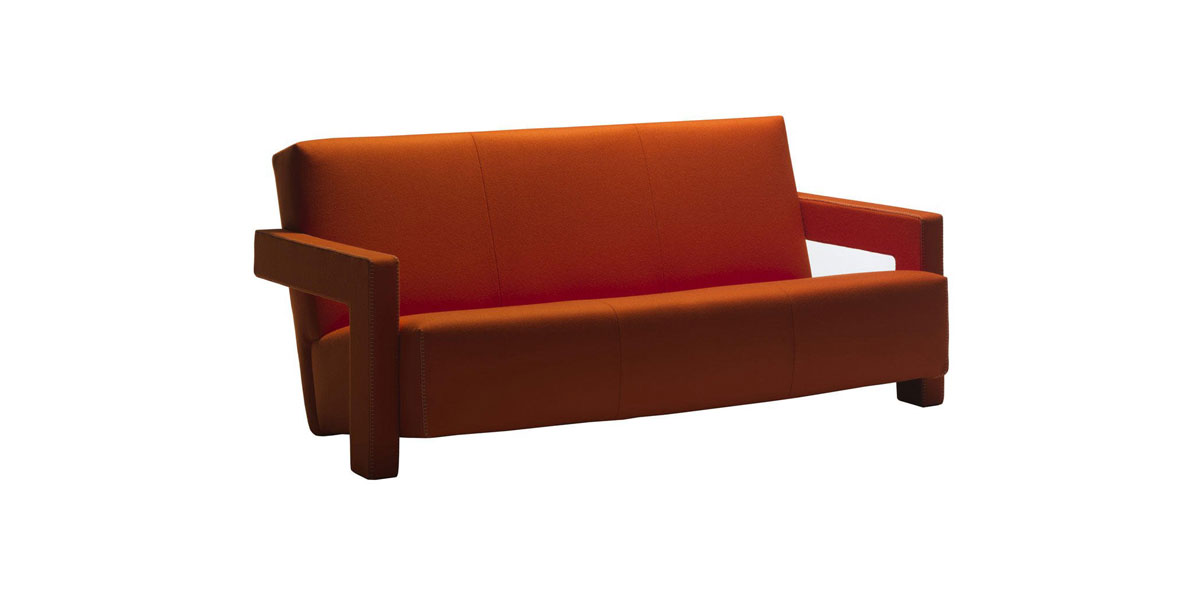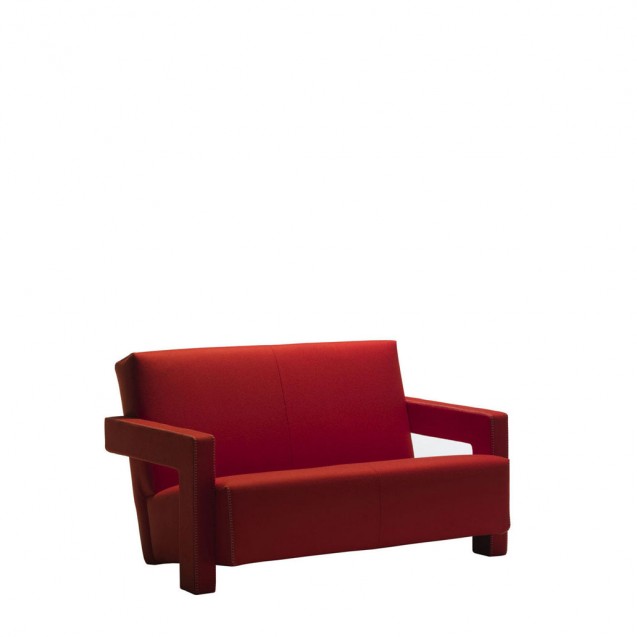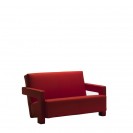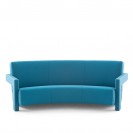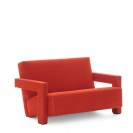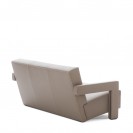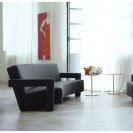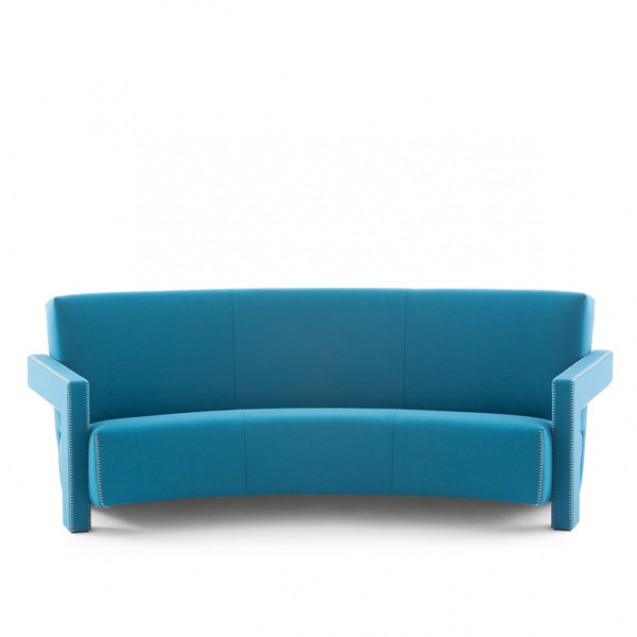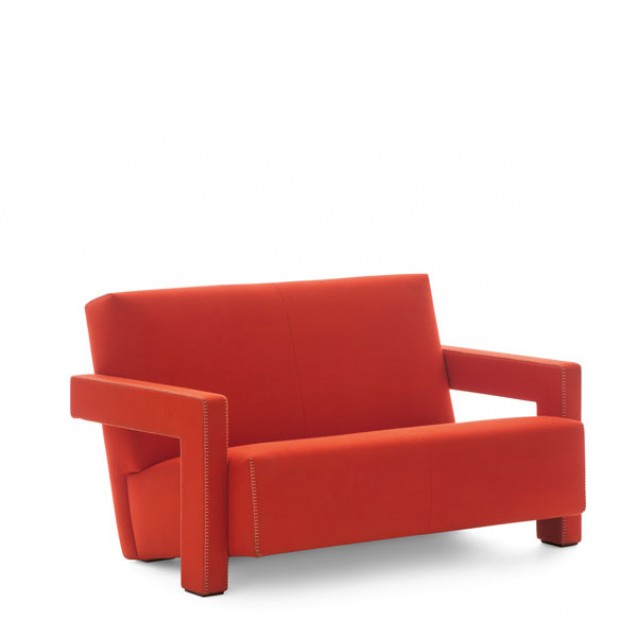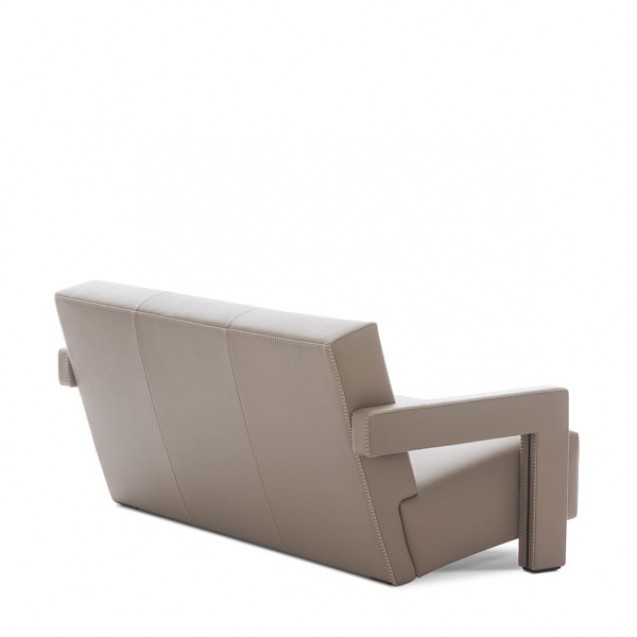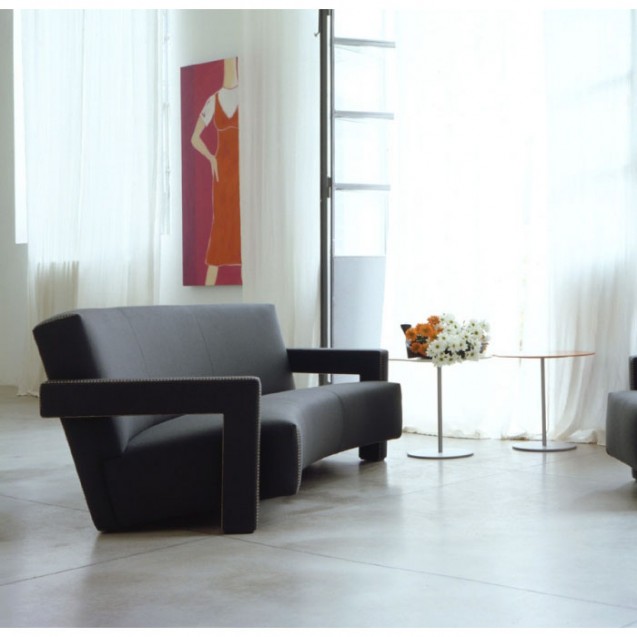637 Utrecht Sofa
Gerrit Rietveld came up with the design for the
Utrecht armchair in 1935 while working for the Metz & Co. department store
in Amsterdam, where his brief was to make a chair for serial production. Taking
market needs into account, while privileging a comfortable and relaxing
experience, led to the elements of the chair being treated as separate units.
As a consequence, the chair became an icon of both the Neoplastic movement (aka
De Stijl), and of Rietveld’s experimental vision. In 2015, the original version
of the chair, without the feet, was made available alongside the one with, as
part of the Mutazioni collection, and was relaunched with its dimensions
adjusted to take account of changes in people’s height over the previous 80
years. The chair is also available in the Gerrit fabric, with blanket stich??
or zig-zag top-stitching, in both cases in five colours.
| About Designer | |
|---|---|
Gerrit Thomas Rietveld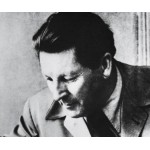 |
Gerrit Thomas Rietveld,
born in Utrecht on 24 June 1888, seems possessed of two personalities, each so
distinct that one might take his work to be that of more than one artist. The
first personality is that seen in the craftsman cabinet-maker working in a
primordial idiom, re-inventing chairs and other furniture as if no one had ever
built them before him and following a structural code all of his own; the
second is that of the architect working with elegant formulas, determined to drive
home the rationalist and neoplastic message in the context of European
architecture. The two activities alternate, overlap, and fuse in a perfect
osmosis unfolding then into a logical sequence. In 1918 Rietveld joined the “De Stijl” movement which had sprung
up around the review of that name founded the year before by Theo van Doesburg.
The group assimilated and translated into ideology certain laws on the dynamic
breakdown of compositions (carrying them to an extreme) that had already been
expressed in painting by the cubists: the “De Stijl” artists also carefully studied the
architectonic lesson taught by the great Frank Lloyd Wright, whose influence
was widely felt in Europe at that time. Collaborating first with
Robert van’t Hoff
and Vilmos Huszar, then with Theo van Doesburg and Cornelius van Eesteren,
Rietveld soon became one of the most distinguished interpreters of the
neoplastic message. Among his most important
works are:
the Schröder house at
Utrecht (1924); the “Row
Houses” at
Utrecht (1931-34); the Dutch pavilion at the Venice Biennial (1954); the
sculpture pavilion in the Rijksmuseum Kröller-Müller at Otterloo and the Van
Gogh Museum in Amsterdam (1955). Out of his equally important furniture,
Cassina has chosen for its own production: the “Red and Blue” (1918), the “Zig-Zag” (1934), the “Schröder 1” (1923), the “Utrecht” (1935) |
